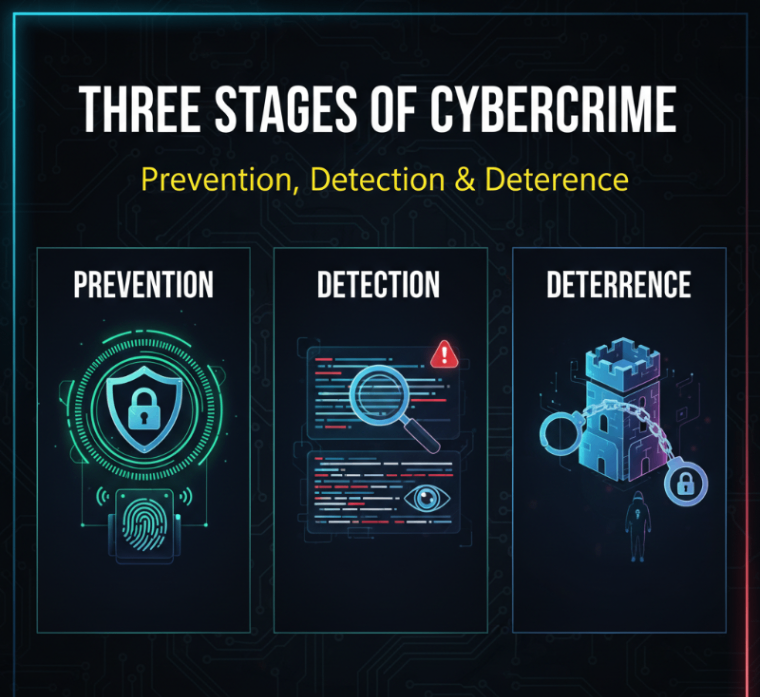In a time when nearly everything has Internet connectivity, cybercrime threatens individuals, companies and governments. Cybercrime is growing and getting increasingly sophisticated, including but not limited to phishing attacks, data breach events and fake "digital arrests."
To help users build a more robust defence against online attacks, cybersecurity specialists emphasize three main components of cybersecurity, namely Prevention, Detection, and Deterrence. These three components of cybersecurity work together to protect users, find breaches, and discourage threats from reoccurring.
1. Prevention – The First Line of Defence
The most effective cybersecurity technique is to prevent the crime before it takes place. Prevention involves trying to make it difficult for a cyber-attack to access your system or use your information.
Common Prevention Best Practices:
- Use a strong, unique password, and implement two-factor authentication (2FA) if available.
- Keep everything updated; keep your software, applications, and antivirus package updated.
- Do not click on unknown links or open files from a site you do not trust.
- Do not disclose your personal or banking information on social media or through unsecured means of information.
- Stay up to date on new types of scams, phishing, and cyber-crime.
- Talk to your family, friends and co-workers about online safety.
Example:
Not being deceived by a call from a fake “cyber police” department, asking for personal information, is an excellent example of prevention.
2. Detection - Intercept Threats Before It's Too Late
Even if all precautions are taken into consideration by organizations, hackers will eventually find a way into your environment. That's where detection comes in- detecting cyber threats in real-time.
How Can Cyber Threats Be Detected:
- Monitor for unknown login attempts or for unknown account activity.
- Enable security notifications, and enable login alerts.
- Use firewalls, antivirus, and network monitoring as well.
- Be wary of and report emails/calls that seem suspicious or fake government messages.
- Report anything suspicious to your cyber security team or to your area cyber helpline (1930)
Remember
If detected early, loss of data and significant financial loss can be mitigated.
3. Deterrence - Creating a Safer Cyber Future
Deterrence is all about ensuring that cybercriminals think twice about committing a crime. It includes strong cyber laws, law enforcement, and raising public awareness.
Deterrence Steps:
- Support strong legal consequences for cybercriminals.
- Report all cybercrimes - even minor ones - to cybercrime.gov.in or 1930.
- Encourage cyber awareness programs within schools and colleges.
- Promote good online behaviour and responsible use of the internet.
- Develop communities that take digital trust and accountability serious.
Deterrence doesn't only impact criminals; it helps users feel in control of their own digital safety.
Final Thoughts :-
Cybersecurity is not solely a technical matter—it’s a joint responsibility.
When we engage in Prevention, act quickly during Detection, and offer Deterrence, we are creating a safer internet for all.
Be careful, be vigilant, and always keep in mind:
Your vigilance is your biggest weapon against cybercrime.


Discussion
Start the conversation
No comments yet
Be the first to share your thoughts on this article. Your insights could spark an interesting discussion!